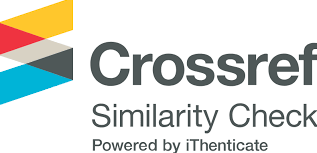Process of receiving, reviewing and approving manuscripts
The Journal of Forest Science applies a double-blind peer-review process.
- Pre-review stage
Upon receiving the submitted manuscript, the Editorial Secretary will conduct an initial check to ensure that it aligns with the Journal's aim and scope and meets the essential quality and formatting requirements.
The VJFS uses plagiarism detection software, powered by iThenticate, to detect instances of overlapping or similar text in all submitted manuscripts.
The Editorial Secretary will then submit the new manuscript to the Editorial Board for review and forwarding to the Editor-in-Chief. The Editor-in-Chief will conduct an initial quality assessment to ensure the manuscript meets the required criteria.
Any manuscript that does not meet the above criteria shall be rejected by the Editor-in-Chief. It will take about 2 to 3 days for this stage.
- Review stage
Manuscript that meets the pre-review stage’s criteria will proceed to a formal review. The manuscript will then be sent to at least two reviewers for evaluation. The selected reviewers are scientists within the scientific field of the manuscript.
Reviewers, Editors and Journal Secretaries are responsible for reviewing and editing the manuscript and proposing whether to accept or reject it. If the manuscript is proposed to be accepted, the manuscript will be forwarded to the Editor-in-Chief for final decision.
Editors can not participate in the review stage regarding their manuscript, family members' or colleagues' manuscript or regarding products or services in which the editor is involved.
This double-blind peer-review period takes an average of 10 to 15 days (However, some manuscripts may take longer or less review time for various reasons).
- Invite reviewers to evaluate manuscripts.
Potential interest conflicts should be considered before inviting reviewers to maintain the Journal's transparency. Reviewers should contact the Editorial Board if they are involved in the following potential conflict categories:
- Being a competitor with authors.
- Being a colleague or collaborator with one of the authors.
- Working as a manager/leader of the authors’ relevant work (commercial or others).
- Being in a working position that prevents the reviewer from giving an objective opinion on the paper.
If the invited reviewer indicates an existing conflict of interest, the Editorial Board appoints another reviewer to replace them.
- Report by reviewers and anonymously
The Editorial Board will send the reviewer's report to the manuscript's authors. Reviewer reports are usually submitted intact but may undergo minor editing, correction of spelling or typographical errors, or deletion of any text that unintentionally reveals the identity of the reviewers.
The reviewer's name is kept strictly confidential. The reviewer's identity may only be disclosed to members of the Editorial Board. The VJFS operates a “double-blind peer-review” process, in which both the reviewer and author identities remain anonymous throughout the review process.
Reviewers are requested not to notify the authors directly. The VJFS also requests that reviewers do not reveal their identities to the authors or discuss the reviewed manuscript with other colleagues until it has been published.
- Edit the manuscripts
After receiving the revised manuscript, the Editorial Board will send it to the reviewers to review the author's modifications.
The revised manuscript will be accepted if the reviewers agree with all revisions and responses from the authors. Otherwise, the Editorial Board will decide to reject or have to perform a re-evaluation.
- Publishing manuscripts
Once the article is accepted, the manuscript will be sent electronically to the lead author. The revised manuscript must be returned to the VJFS within 48 hours.








